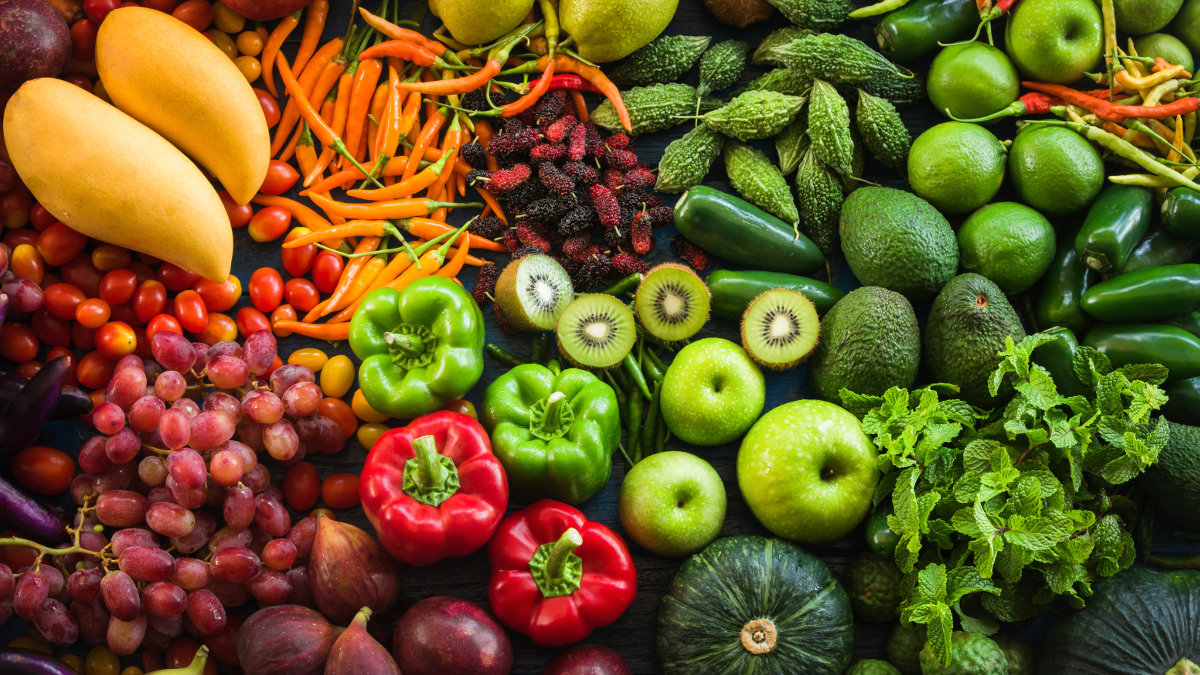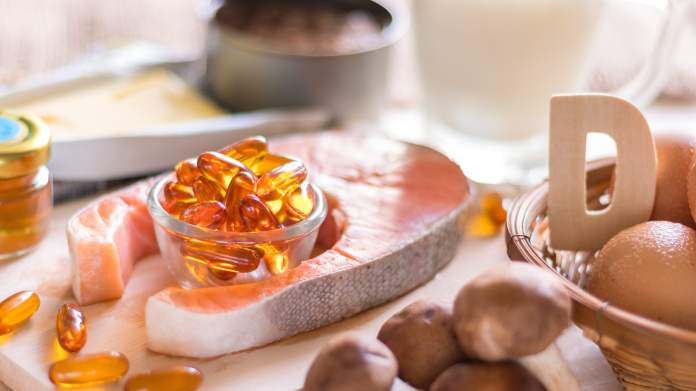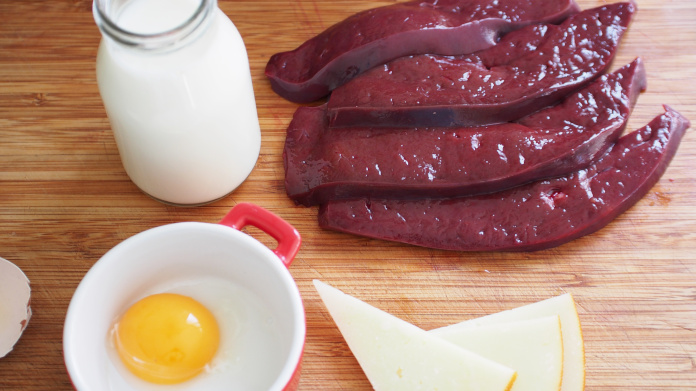
What exactly are phytonutrients?
From the Greek phyto (‘plant’), a phytonutrient is literally a plant-derived nutrient. It is thus a chemical compound naturally present in plant foods, which once ingested, offers benefits for our health (1).
Existing in more than 25,000 different forms, phytonutrients are found in fruits and vegetables, spices, whole grains, legumes, seeds and oilseeds.
They’re not only involved in thepigmentation of plants, but they also ensure their integrity, protecting them from UV rays and repelling potential parasites. Given their effects at a botanical level, it’s easy to see why human nutrition researchers find them so fascinating!
Phytonutrients and health: how to obtain their benefits
As the body is unable to produce phytonutrients itself, we need to focus first and foremost on what we put on our plates! In order to benefit from these important active compounds, we need to eat a varied, balanced diet, with plenty of plant-based foods (2).
To create your menu, think ‘colour’: as well as livening up your dishes, bright colours are usually a sign that a food contains phytonutrients. For example, the humble tomato would be a much paler affair without the presence of lycopene! (3)
Alongside diet, targeted phytonutrient supplementation can be helpful for boosting your daily intake of phytonutrients. Let’s take a look at the most important of them.
Carotenoids, responsible for our vegetables’ ‘healthy glow’
If you’re thinking ‘carrots’, you’re on the right track. Carotenoids constitute a large group of phytonutrients which give fruits and vegetables their yellow, orange and red hues. Comprising more than 750 distinct pigments, they essentially protect photosynthetic plants from damaging wavelengths.
They include the famous orange beta-carotene, the precursor of vitamin A, as well as the yellow-coloured lutein and zeaxanthin which migrate towards the eyes, accumulating in the macula of the retina. Lycopene, mentioned above, is also a carotenoid, one which is stored more in the liver and prostate (4-5).
To boost your intake of carotenoids, you may want to think about supplementation (with, for example, Carottol, a unique formulation combining beta-carotene, lutein, zeaxanthin, lycopene and astaxanthin). Other products focus more on specific compounds (such as the supplement Lutein, a significant source of this carotenoid).
The amazing powers of flavonoids
Why does red wine get such a good press (as long as it’s not drunk to excess, of course)? It’s probably because of its flavonoid content! In the plant kingdom, these compounds create a protective shield against viruses, bacteria and mould. Numbering more than 8,000, flavonoids are divided into various sub-groups (flavonols, flavones, flavanones, flavan-3-ols, anthocyanidins) (6).
EGCG from green tea leaves, quercetin from apples, rutin from buckwheat and hesperidin from orange zest are among the best-known (7-8).
Certain supplements combine several flavonoids in synergistic formulations (such as FlavoLife, which contains 9 compounds covering all the flavonoid sub-groups).
Coumarin, a key aromatic compound
Coumarin is a secondary metabolite of plants, the main function of which is to deter herbivores. Perfumiers are attracted by its scent of cut hay, but more importantly, this molecule unintentionally contributed to the development of oral anticoagulants (9).
Coumarin is highly concentrated in tonka beans, but is also found in lavender and sweet clover (an excellent venotonic which forms the supplement Lymphatonic).
Indole, a phytochemical compound as sweet as they come!
Naturally present in many white flowers, indole is recognised by its heady scent. In the form of indole-3-carbinol, it constitutes a remarkable phytonutrient of the glucosinolate family, found in cruciferous vegetables (cauliflower, Brussels sprouts, broccoli ...) (10)
As well as eating sauerkraut, you can use supplements to boost your intake (such as DIM, a formulation based on diindolylmethane, a compound the body makes from digesting cruciferous vegetables).
Isoflavones, the stars of the soya bean
Fans of tofu will be familiar with isoflavones, a type of phytoestrogen found primarily in dried pulses, especially soya beans. Their female hormone-like structure quickly attracted the attention of the scientific community, and current research shows that isoflavones are good for both female and male health (11).
Combined with other compounds, they complete the phytonutrient ‘arsenal’ offered by certain supplements (such as Red Propolis, one of the few red propolissupplements available, rich in isoflavones and containing almost 300 exceptional micronutrients).
Lignans, remarkable phytoestrogens
Like flax and sesame, some plant species contain another type of phytoestrogen called lignans.These phenolic compounds are found in woody tissues, seeds and roots.
A particular feature of lignans is the fact that they are metabolised during digestion into enterolignans, the benefits of which are of significant interest to scientists (12).
To benefit from lignans, try taking an appropriate supplement.
Organosulfur compounds, champions of the Alliaceae family
Is it a good idea to add a crushed garlic clove to your vinaigrette? Most definitely! Like all members of the Alliaceae family, this superfood owes its reputation mainly to its organosulfur compounds.
Unfortunately, however, garlic is no friend to fresh breath. To get round this, consider taking allicin-free supplements (such as Organic ABG10+®, an organic supplement with the highest dose of S-allyl-cysteine on the market (a powerful organosulfur compound) (13).
Phytosterols, cholesterol’s little plant cousins
Predominantly found in vegetable oils and nuts, phytosterols are plant lipids which closely resemble cholesterol. An illusion which may well ‘trick’ the body’s chief fat-transporters! (14)
Some supplement producers have thus wisely incorporated them into their formulations (such as Damiana Extract, which contains β-sitosterol).
References
- Leitzmann C. Characteristics and Health Benefits of Phytochemicals. Forsch Komplementmed. 2016;23(2):69-74. doi: 10.1159/000444063. Epub 2016 Feb 4. PMID: 27160996.
- Probst YC, Guan VX, Kent K. Dietary phytochemical intake from foods and health outcomes: a systematic review protocol and preliminary scoping. BMJ Open. 2017;7(2):e013337. Published 2017 Feb 15. doi:10.1136/bmjopen-2016-013337
- Khoo HE, Azlan A, Tang ST, Lim SM. Anthocyanidins and anthocyanins: colored pigments as food, pharmaceutical ingredients, and the potential health benefits. Food Nutr Res. 2017 Aug 13;61(1):1361779. doi: 10.1080/16546628.2017.1361779. PMID: 28970777; PMCID: PMC5613902.
- Fiedor J, Burda K. Potential role of carotenoids as antioxidants in human health and disease. Nutrients. 2014;6(2):466-488. Published 2014 Jan 27. doi:10.3390/nu6020466
- Mozos I, Stoian D, Caraba A, Malainer C, Horbańczuk JO, Atanasov AG. Lycopene and Vascular Health. Front Pharmacol. 2018;9:521. Published 2018 May 23. doi:10.3389/fphar.2018.00521
- Ginwala R, Bhavsar R, Chigbu DI, Jain P, Khan ZK. Potential Role of Flavonoids in Treating Chronic Inflammatory Diseases with a Special Focus on the Anti-Inflammatory Activity of Apigenin. Antioxidants (Basel). 2019;8(2):35. Published 2019 Feb 5. doi:10.3390/antiox8020035
- Boschmann M, Thielecke F. The effects of epigallocatechin-3-gallate on thermogenesis and fat oxidation in obese men: a pilot study. J Am Coll Nutr. 2007 Aug;26(4):389S-395S. doi: 10.1080/07315724.2007.10719627. PMID: 17906192.
- Salehi B, Machin L, Monzote L, et al. Therapeutic Potential of Quercetin: New Insights and Perspectives for Human Health. ACS Omega. 2020;5(20):11849-11872. Published 2020 May 14. doi:10.1021/acsomega.0c01818
- Venugopala KN, Rashmi V, Odhav B. Review on natural coumarin lead compounds for their pharmacological activity. Biomed Res Int. 2013;2013:963248. doi:10.1155/2013/963248
- Katz E, Nisani S, Chamovitz DA. Indole-3-carbinol: a plant hormone combatting cancer. F1000Res. 2018;7:F1000 Faculty Rev-689. Published 2018 Jun 1. doi:10.12688/f1000research.14127.1
- Pabich M, Materska M. Biological Effect of Soy Isoflavones in the Prevention of Civilization Diseases. Nutrients. 2019;11(7):1660. Published 2019 Jul 20. doi:10.3390/nu11071660
- Kuijsten A, Arts IC, Hollman PC, van't Veer P, Kampman E. Plasma enterolignans are associated with lower colorectal adenoma risk. Cancer Epidemiol Biomarkers Prev. 2006 Jun;15(6):1132-6. doi: 10.1158/1055-9965.EPI-05-0991. PMID: 16775171.
- Ruhee RT, Roberts LA, Ma S, Suzuki K. Organosulfur Compounds: A Review of Their Anti-inflammatory Effects in Human Health. Front Nutr. 2020;7:64. Published 2020 Jun 2. doi:10.3389/fnut.2020.00064
- Cabral CE, Klein MRST. Phytosterols in the Treatment of Hypercholesterolemia and Prevention of Cardiovascular Diseases. Arq Bras Cardiol. 2017;109(5):475-482. doi:10.5935/abc.20170158
3 Days
Great service
Great service items dispatched straight away and arrived on time
M***** G***
6 Days
A good webshop for supplements
A good webshop for supplements, it has a large selection of them and considering the quality, the pricing offers good value for money. The ordering process is easy and the products are sent straight away.
Maurice
8 Days
Great quality
Products are of great quality and fast delivered.
Fred Laan
9 Days
SuperSmart destaca por la calidad de…
SuperSmart destaca por la calidad de sus productos.
GONZALEZ PALACIN Luis
10 Days
snelle levering,perfect product.
snelle levering,perfect product.
robert
10 Days
Been a customer for over 15 years and…
Been a customer for over 15 years and find their products along with the service excellent. I recommend Super Smart to all my friends.
Del Chandler
11 Days
Excellent product and service
The product was excellent and so were the delivery and the service
F. Ferlitz
13 Days
Never an issue ordering
Never an issue ordering. Simple and to the point. And product always comes the following day. Quality is great too!
Andrea
14 Days
Excellente service & products with rare…
Excellente service & products with rare revelation supplements I love ❤️
Giovanna Escalera
15 Days
Fast shipping
Fast shipping, products as ordered!
Coindozer
15 Days
The item arrived on time and is what…
The item arrived on time and is what was stated in the order.
HARDY Chris
18 Days
Very good products
Very good products. Very reliable. Quick delivery.
MIFSUD Joseph
22 Days
Fast shipping
Fast shipping, good products (just shipping costs to my country are extremely high).
Tanja Matko
23 Days
Many thanks.
Many thanks.
Alan
23 Days
Quick delivery and good product
Quick delivery and good product
cl



